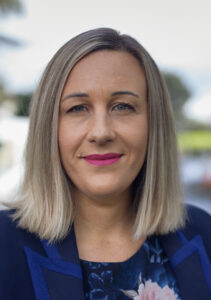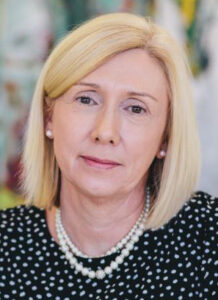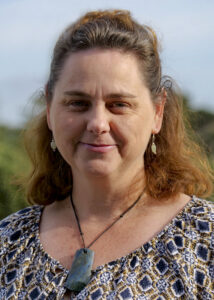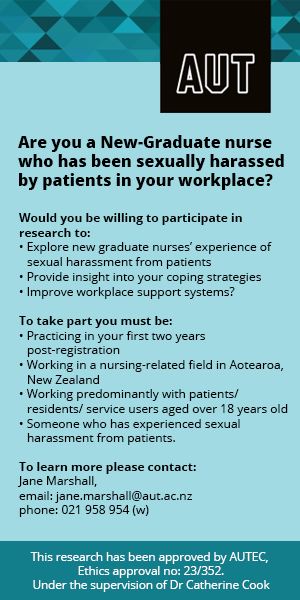The End of Life Choice Act (EoLCA) 20191 has now offered a legal assisted death to eligible individuals in Aotearoa/New Zealand for 10 months.
Since the legislation came into effect in November 2021, there have been progressive increases in patients inquiring about assisted dying, and growing numbers are accessing this new means of dying.2

As of June 2022, 400 people have applied for an assisted death. Of these, 143 people have had an assisted death, 153 did not continue the process (due to being ineligible, withdrawing the application or dying) and 101 are still being assessed or prepared for assisted dying. Most of those who have applied are NZ European/Pākeha (79 per cent), followed by Pacific and “other” ethnicities (14 per cent), Māori (5 per cent) and Asian (2 per cent).2
Aside from statistical reporting, we do not know what the experiences of patients and providers are in this process, nor the nuances of culture and context, eg how tikanga Māori is being supported. Research is being undertaken into the experiences of health professionals involved in assisted dying in Aotearoa/New Zealand and the perspectives of families of people who are requesting and using this service.3
Nurses are usually the first point of contact for patients making requests for information about assisted dying. It is imperative that nurses are aware of the legal requirements surrounding the legislation if we are to feel competent and confident in responding to these requests.4 Furthermore, how this practice can be responsive to te Tiriti has not yet been described.5

While for some nurses this new service may challenge their nursing practice and professional identity, assisted dying is here to stay in New Zealand. Evidence from overseas suggests that while there are challenges to practice, there are also positive aspects to this new means of dying.
This duality of challenge and positive experience is highlighted in a recent study4 which analysed literature from Belgium and Canada where assisted dying is legal. These researchers noted that there are psychological and emotional impacts to being part of the assisted dying process, and the gravity of what is occurring is not lost on nurses. This is seen clearly in another study when one nurse said, “I feel we share a sacred space at this moment, and I am moved, [I] feel the profound weight of it all”.6
On the one hand, there are deep professional and personal ethics involved when engaging in a practice with someone who is terminally ill to end their life. On the other hand, this can be countered by what some suggest is a beautiful death in that they are helping “ . . . somebody to die in the best way possible”.7

Yet the potential for positive experiences for nurses is impeded by a lack of policy and clear procedural guidelines. This places nurses at a greater risk for the negative aspects of assisted dying. Nurses have indicated they need fundamental processes and protocols to be in place to feel safe and support each other when caring for someone in the assisted dying process.4
This is an important point to note, given the failure to mention nurses and their roles in the EoLCA,1 beyond that of the nurse practitioner. Such an omission from the legislation would suggest that there is no obligation for organisations to support nurses in relation to assisted dying services, and that nurses need to be fully prepared8 to reduce their exposure to professional risk.
Here we provide a brief practical guide to what nurses can and cannot do in relation to the legislation, offering suggestions as to what nurses can ask of organisations to support them as more assisted dying requests are made. As nurses are key advocates for those in their care, this provides a brief overview of the legislation to protect nurses from potential professional risk.
Nurses’ role in the EoLCA
- Nurses (or any health-care professional) cannot initiate conversations about assisted dying with patients/family/whānau under their care in a professional workplace.
- Nurses are legally obliged to respond professionally and in a culturally safe way to any request from an individual for information on the assisted dying service. For family members, nurses can direct them to the Ministry of Health website and the Support and Consultation for End of Life in New Zealand (SCENZ) group, as they can for everyone.
- Nurses can conscientiously object to being involved in any part of the assisted dying process. However, if a person asks them for information, they are obliged to advise of their objection and ask another staff member to provide the requested information. In doing this, nurses should not be judgmental towards the individual, as it is a legal service, nor should they be judged for taking a conscientious objector stance.
- Nurses cannot discuss assisted dying requests from people under their care with the person’s family/whānau and friends without the individual’s consent.1
Supporting nurses in practice
- Health-care organisations should provide clear policy and procedural guidelines on assisted dying services to support nurses’ confidence in responding to requests.
- Communication training should be available to support nurses in conducting open conversations in response to assisted dying service requests. This should include cultural safety education specific to end-of-life care.
- Professional supervision should be offered to those involved in assisted dying services.
- Debriefing sessions should be held following an assisted death.
- Those who conscientiously object should be supported in their stance, not be judged for it, and provision should be made to ensure their professional safety.
Ultimately, nurses are at the front line in patient care and, as such, need to feel empowered to tell employers what they need, if they are to feel professionally safe and competent when exposed to assisted dying requests and services. Without this, the implementation of assisted dying will fall short of providing equitable access and outcomes for all people living in Aotearoa/New Zealand.
Margaret Sandham, RN, DClinPsych, is a senior lecturer in nursing at Auckland University of Technology and a clinical psychologist.
Rhona Winnington, RN, MA, PhD, is a senior lecturer in nursing at the Auckland University of Technology.
Melissa Carey (Ngāti Raukawa), RN, PhD, is a research fellow at the University of Auckland school of nursing, focused on ageing and end-of-life care for Māori.
References
- End of Life Choice Act 2019.
- Ministry of Health. (2022). Assisted dying service data and reporting.
- Cheung, G., Frey, R., Young, J., Hoeh, N., Carey, M., Vara, A., & Menkes, D. B. (2022). Voluntary assisted dying: The expanded role of psychiatrists in Australia and New Zealand. Australian & New Zealand Journal of Psychiatry, 56(4), 319-322. https://doi.org/10.1177/00048674221081419
- Sandham, M., Carey, M., Hedgecock, E., & Jarden, R. (2022). Nurses’ experiences of supporting patients requesting voluntary assisted dying: a qualitative meta-synthesis. JAN. https://doi.org/10.1111/jan.15324
- Lee, P. (2020). Mōku anō ēnei rā: The End of Life Choice Act and its Compliance with Te Tiriti o Waitangi. Te Tai Haruharu: Journal of Māori and Indigenous Issues.
- Beuthin, R. (2018). Cultivating compassion: The practice experience of a medical assistance in dying coordinator in Canada. Qualitative Health Research, 28(11), 1679-1691.
- Bruce, A., & Beuthin, R. (2020). Medically assisted dying in Canada: “Beautiful death” is transforming nurses’ experiences of suffering. The Canadian Journal of Nursing Research — Revue Canadienne de Recherche en Sciences Infirmieres, 52(4), 268-277.
- Pesut, B., Thorne, S., Greig, M., Fulton, A., Janke, R., & Vis-Dunbar, M. (2019). Ethical, policy and practice implications of nurses’ experiences with assisted death. Advances in Nursing Science, 42(3), 216-230.



